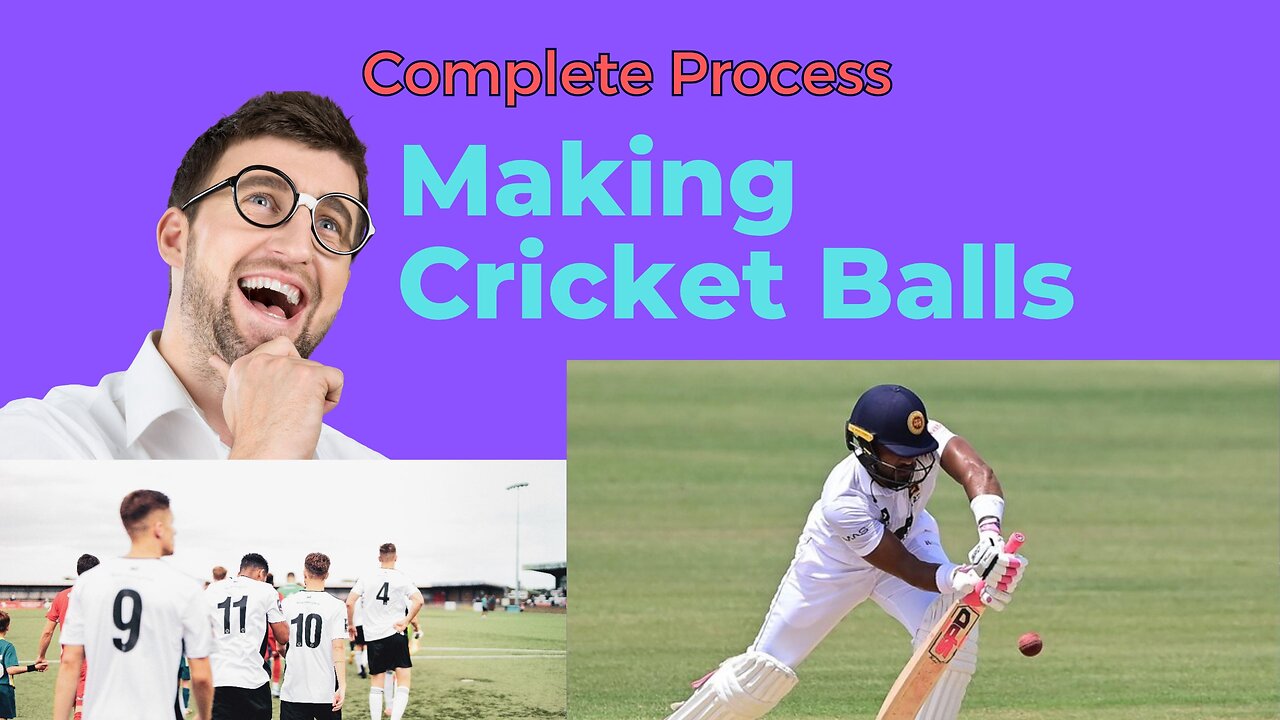Premium Only Content

Labored Process of Making Cricket Balls
Complete Process
1) Selection of Raw Materials:
The primary materials used in cricket ball production are leather, cork, and thread. High-quality leather is selected for the outer covering, and cork is chosen for the core.
2) Cutting Leather:
The leather is cut into two identical hemispheres, each forming one half of the ball's outer shell. These pieces will later be stitched together.
3) Shaping Cork Core:
The cork is shaped into a hemisphere that will serve as the core of the cricket ball. It's important to ensure the core is symmetrical and of the correct weight.
4) Stitching:
The two leather hemispheres are stitched together using a specialized technique that ensures the seam remains flush with the surface. This stitching process requires great skill and precision to maintain the ball's shape.
5) Applying Waxed Thread:
The seam is coated with waxed thread to enhance its durability and prevent fraying during play. This also contributes to the ball's ability to swing in the air.
6) Layering and Binding:
Additional layers of cork and string are added to the core to give the ball its structure and weight. The core is bound tightly with string, and another layer of cork is added.
7) Applying Outer Leather:
The core is encased in the two leather hemispheres stitched together earlier. The leather is stretched and glued to ensure a snug fit over the core.
8) Shaping and Pressing:
The ball is carefully shaped using hand tools or specialized machinery to give it its final round and even shape. It is then pressed to compact the materials and solidify the ball's structure.
9) Polishing and Finishing:
The outer surface of the ball is polished to achieve a smooth and consistent texture. This step is crucial for maintaining the ball's aerodynamics during play.
10) Quality Control:
Each ball undergoes rigorous quality control checks to ensure it meets the required weight, dimensions, and performance standards. Balls that pass these checks move on to the next stage.
11) Final Inspection:
A thorough inspection is carried out to detect any defects, inconsistencies, or imperfections. Only balls that meet the strict criteria are approved for use.
12) Stamping and Branding:
The approved cricket balls are stamped with relevant information, such as the manufacturer's logo, ball type (red or white), and any certification marks.
13) Packaging:
The finalized cricket balls are packaged and prepared for distribution. They are usually placed in protective cases or boxes to maintain their condition until they are used in matches.
-
 2:20:30
2:20:30
The Dilley Show
6 hours ago $16.17 earnedRoger Stone in Studio plus Q&A Friday! w/Author Brenden Dilley 12/27/2024
43.9K2 -
 1:57:02
1:57:02
The Charlie Kirk Show
4 hours agoThe Great H-1B Battle + AMA | Lomez | 12.27.24
96.1K88 -
 11:39
11:39
Russell Brand
1 day agoWhat You're Not Being Told About The Syrian War
128K211 -
 DVR
DVR
Bannons War Room
1 year agoWarRoom Live
101M -
 1:49:21
1:49:21
Film Threat
7 hours agoBEST AND WORST OF 2024 + SQUID GAME SEASON 2 | Film Threat Livecast
41K5 -
 1:06:04
1:06:04
The Big Mig™
21 hours agoGlobal Finance Forum Powered By Genesis Gold Group
33.7K2 -
 34:38
34:38
Tudor Dixon
5 hours agoThe Changing Landscape Between Tech and Politics with Mike Benz | The Tudor Dixon Podcast
25.7K3 -
 2:23:58
2:23:58
Matt Kohrs
16 hours agoRumble's Stock Is EXPLODING!!! || The MK Show
86K6 -
 1:57:47
1:57:47
LFA TV
19 hours agoBOMBSHELL FINAL REPORT: BIDEN ADMIN SUPPRESSED WUHAN LAB LEAK | LIVE FROM AMERICA 12.27.24 11am EST
48.6K6 -
 43:07
43:07
Grant Stinchfield
5 hours ago $6.21 earnedWe Built it... China Controls it... Trump Will Take it Back!
29.5K9